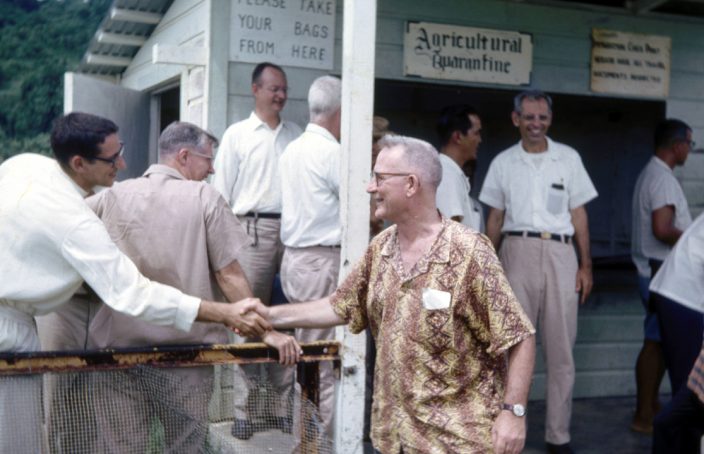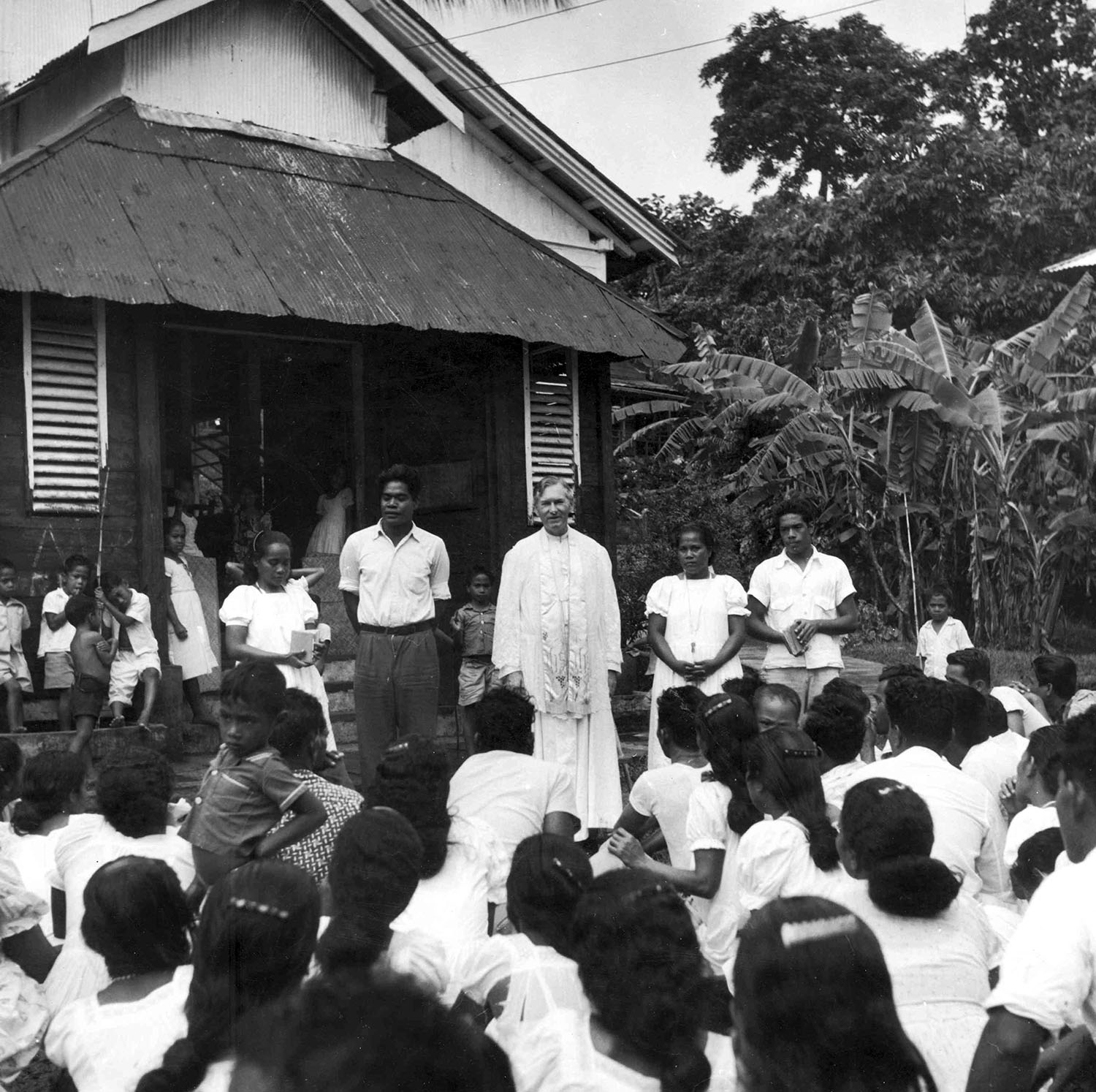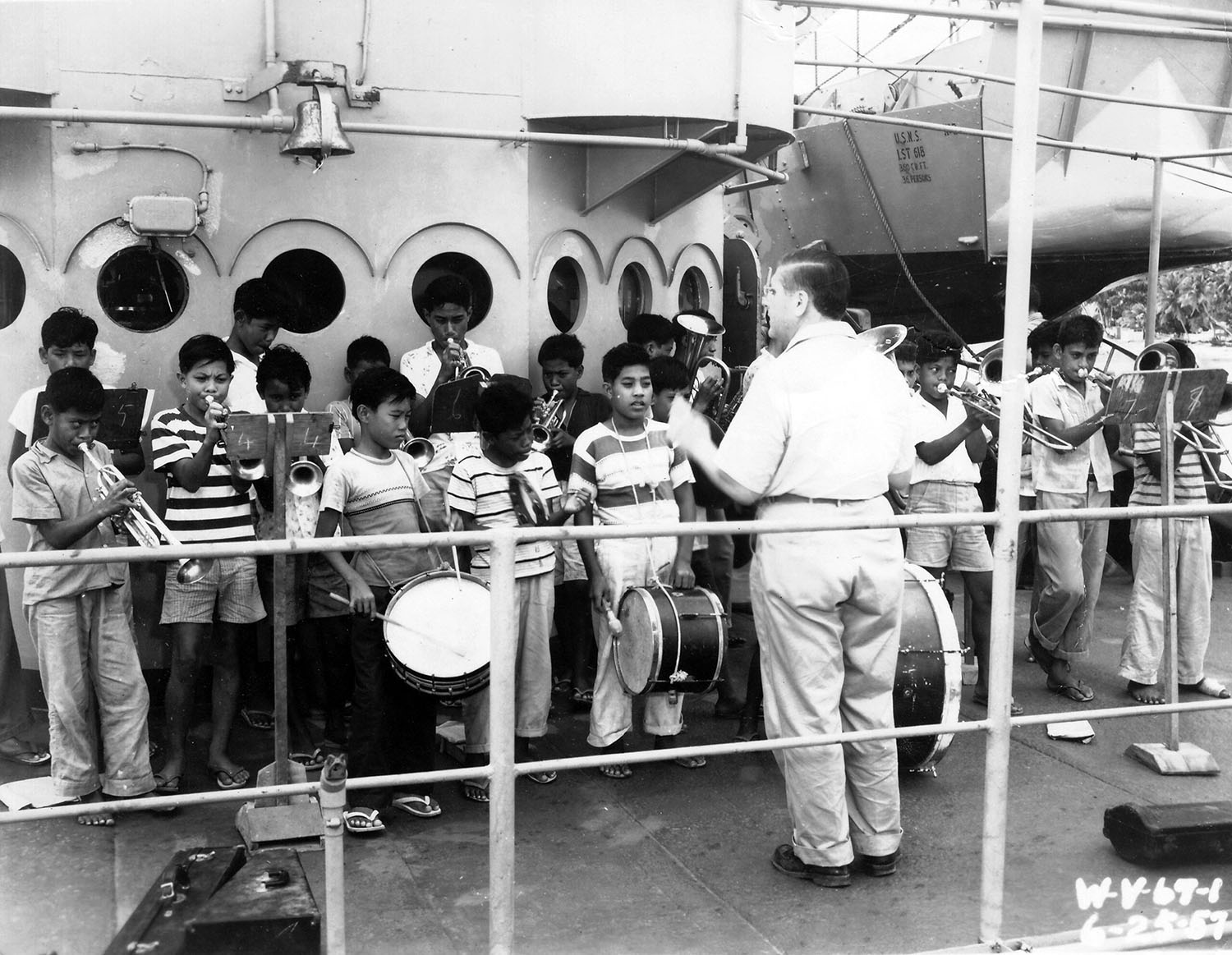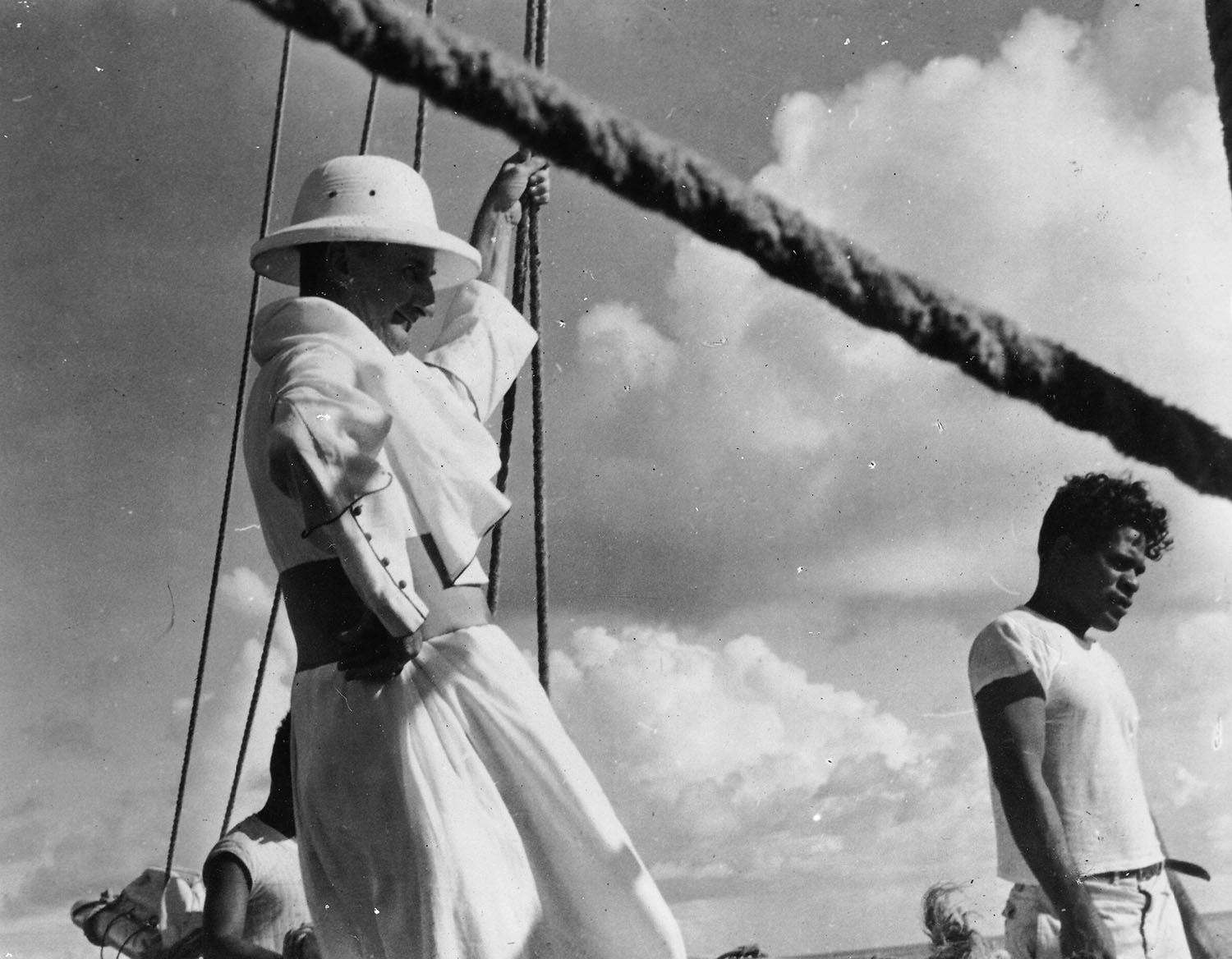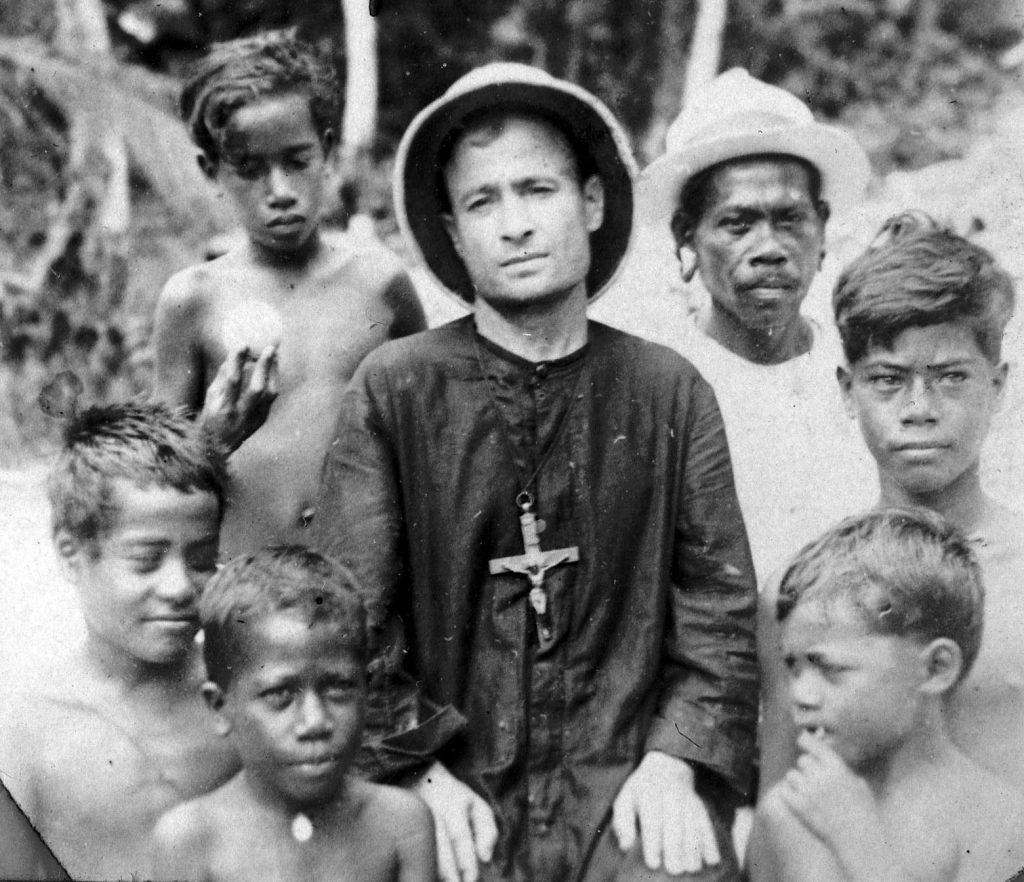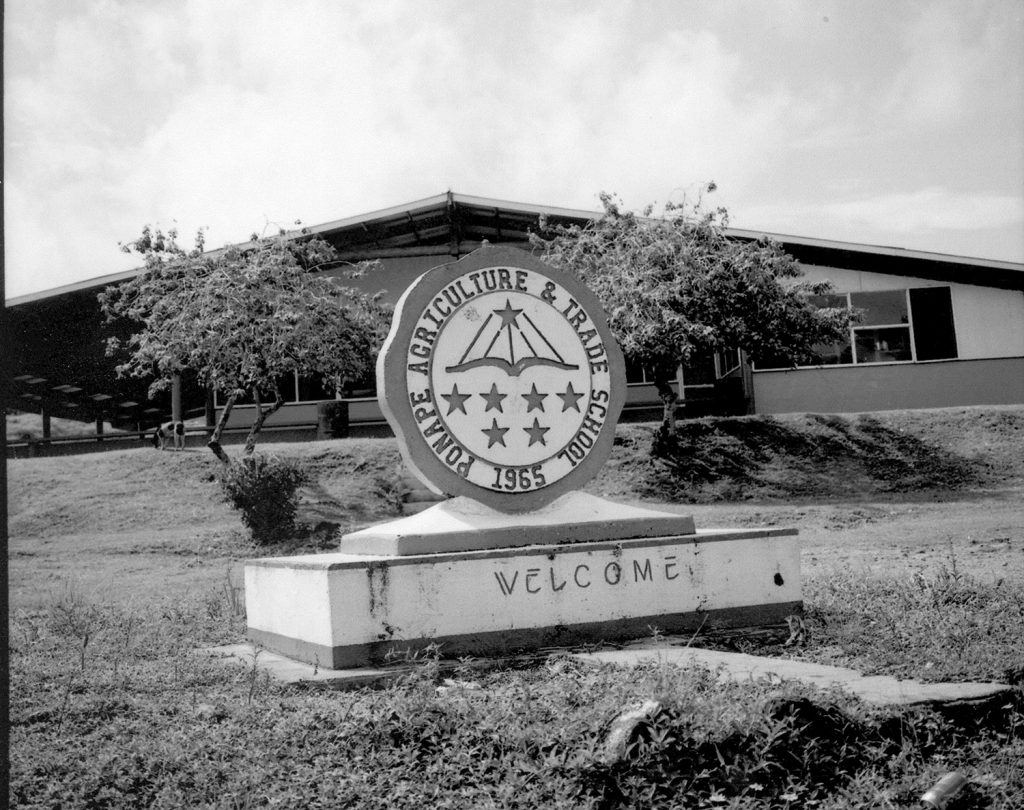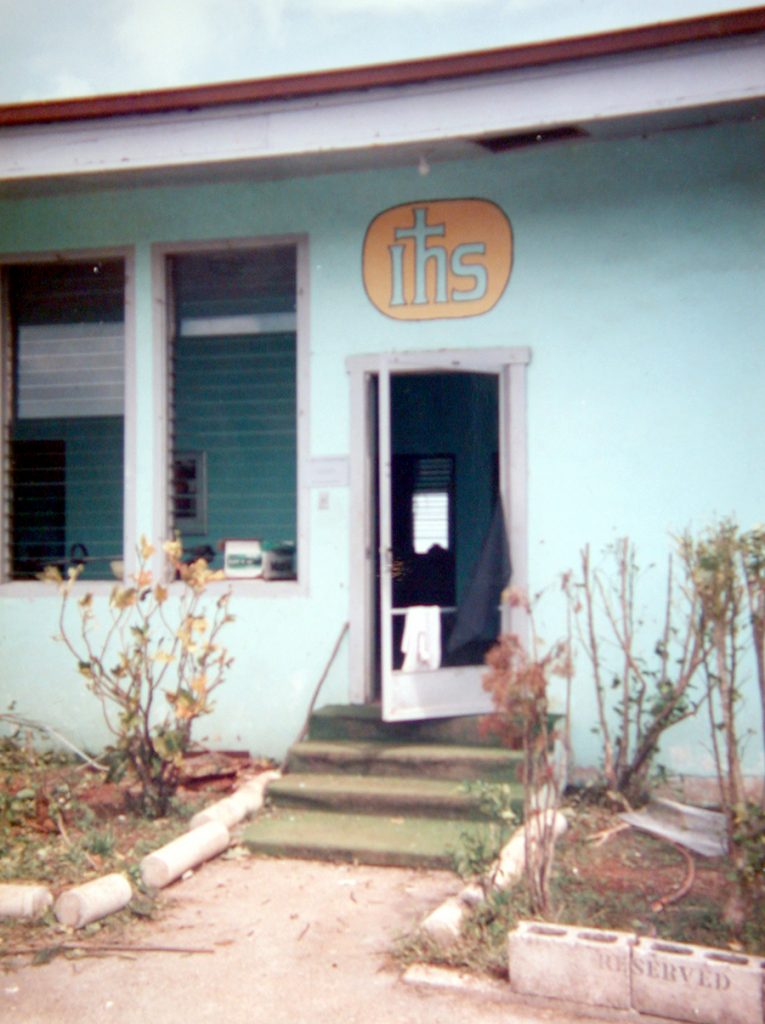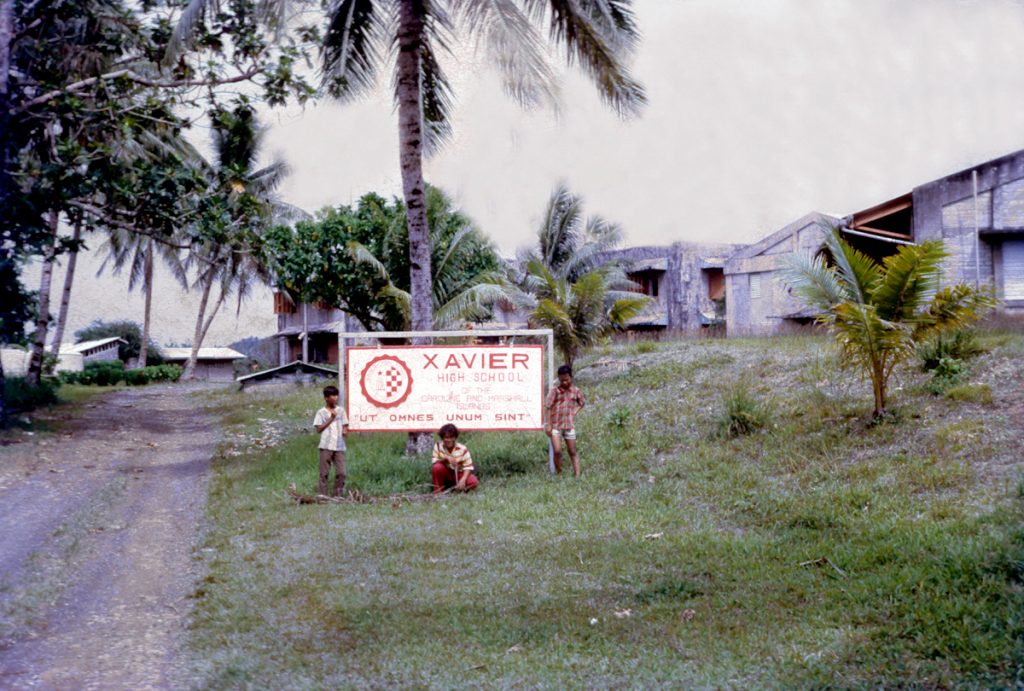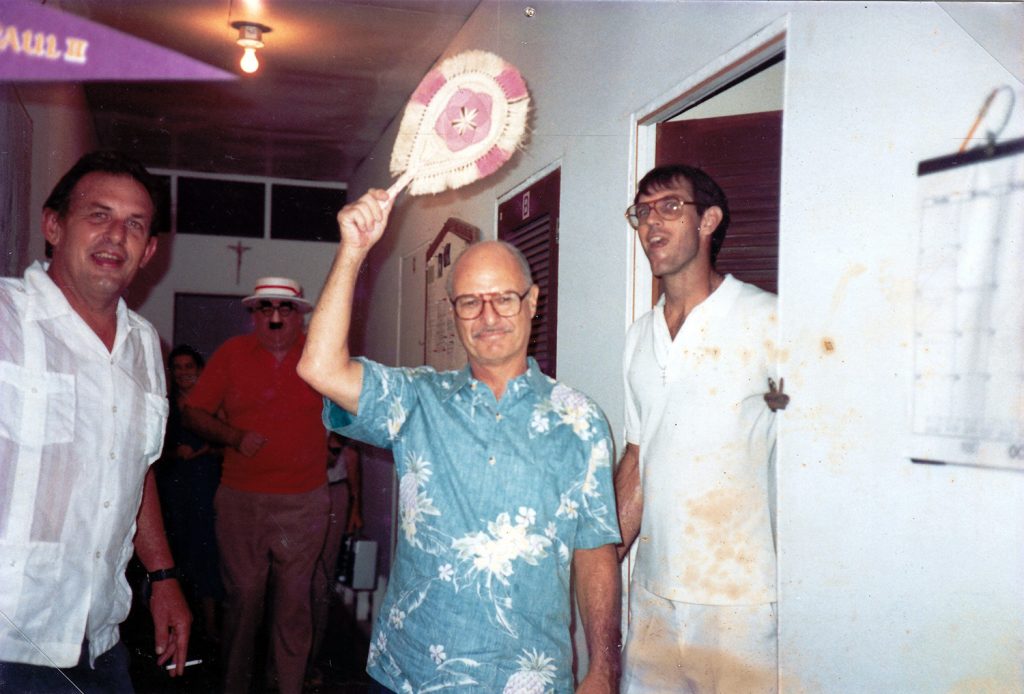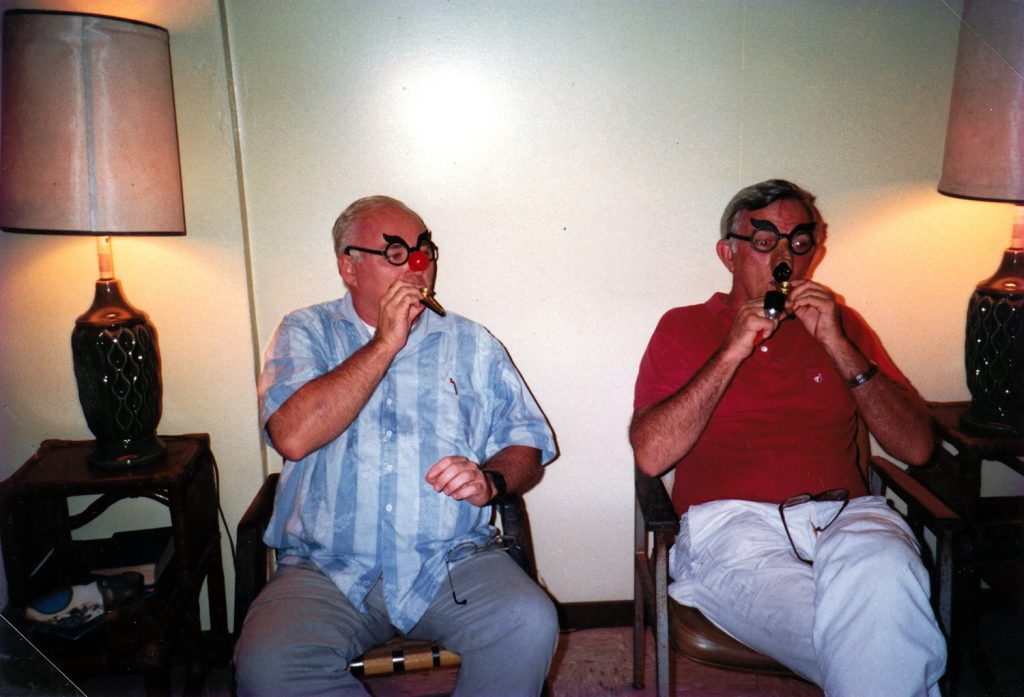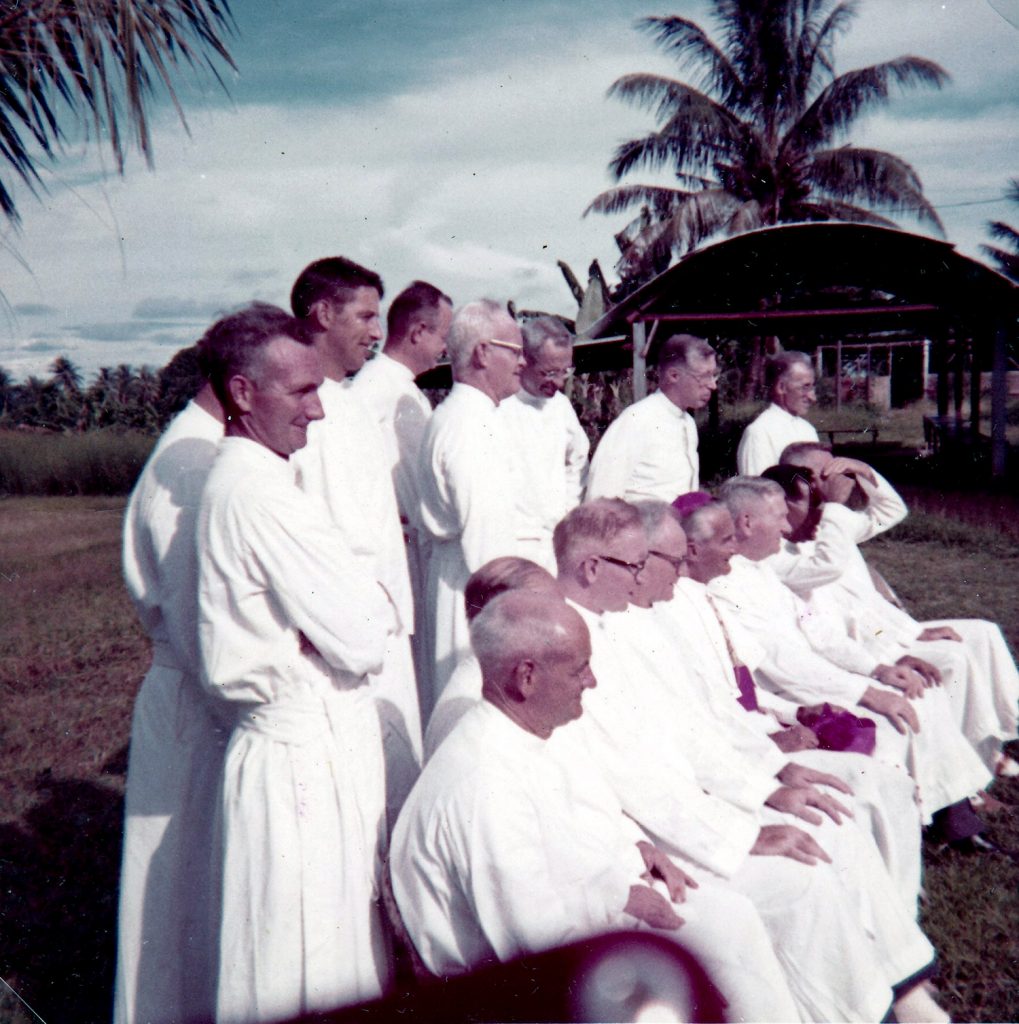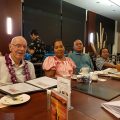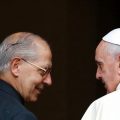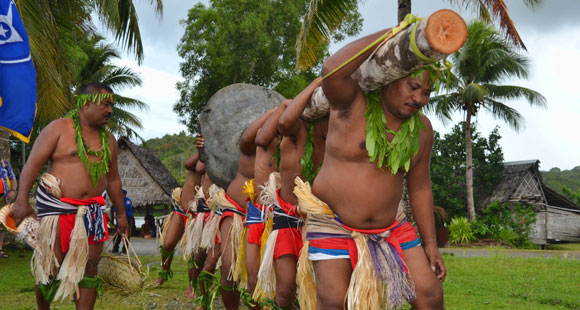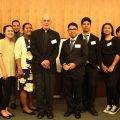Happy 100th Anniversary to Us!
I knew there was something special about 2021, but I couldn’t put my finger on it. Then, just the other day, it came to me. This year–in fact, this month–marks one century of Jesuit work in Micronesia.
On March 14, 1921, two Jesuits disembarked from the Japanese steamer at Yap. A few days later four more Jesuits were put ashore on Palau, where they were escorted amid joyful singing to the German-built church in Koror. As the ship sailed eastward, Jesuits were dropped off at one island group after another until all 22 men were put ashore. With that the Jesuit era in the islands began.
This wasn’t the first time Jesuits appeared in the islands, of course. Back in 1668, under Fr. Diego Luis San Vitores, they opened the first mission in the Marianas and remained there for a century until Jesuits were expelled from all parts of the Spanish realm.
So here were the Jesuits again, now preparing to replace the German Capuchins who had been deported soon after Japan seized the islands at the start of World War I. Japan had sent an Admiral Yamamoto (not the same Yamamoto who made his reputation in the next war) paid a visit to the pope to request missionaries. There had been no masses in some places for five years. Local catechists were running out of prayers. People were spiritually starving, and Japanese authorities could use some support in “civilizing” the island folks.
According to the story I heard, the pope approached three different religious orders to take over the mission in Micronesia, but the heads of these orders claimed they were already over-committed. But wait! Don’t Jesuits pride themselves on the pledge to accept special missions from the Vicar of Christ? How could the superior general of the Jesuits turn down the request? He couldn’t. So in late 1920, 22 Spanish Jesuits, with Fr. Santiago Lopez de Rego at their head, boarded a ship for the Pacific.
That started the flow. Fr. Espinal to the Mortlocks, Fr. Jaime and Fr. Hernandez to Chuuk. Br. Cobo and Fr. Berganza to Pohnpei, Fr. Marino and Fr. Elias to Palau. And on and on…. The folks I met in the early 60s when I was introduced to the islands would smile when one of the names was mentioned before the old stories started rolling out.
The Jesuits continued coming after the war, but the newcomers were Americans. There was the one in Palau who co-authored the first local dictionary. Or the former military chaplain, the one who built church after church in the outer islands and who swam every afternoon. The brother in Chuuk who was always building churches and schools and rectories, but would amuse the kids by pulling out his dentures and clicking them. The tres amigos on Pohnpei, led by a two-pack-a-day smoker who never seemed to inhale, but was tireless in organizing revolutionary church programs during the 70s. Or what about the priest who became a bandleader in Majuro even if he couldn’t really read music, and a part-time bus-driver as well? (Someone had to pick up the Catholics for Sunday mass.)
Maybe it was because I knew many of them so well, but I don’t recall seeing bright halos ringing their heads. They didn’t mind having fun, but they also knew how to get the job done. So many of them, stirring up fond memories… friends and mentors, sometimes debating partners (Fr. Rively and the other old-timers in Chuuk, for instance, after they finished listening to Rush Limbaugh’s program).
I don’t know how you island friends feel about what happened back in 1921, but for me it was one of the greatest blessings in my life. Thank you, Admiral Yamamoto!

